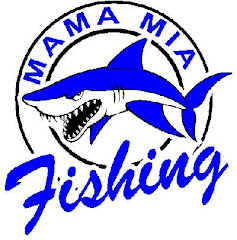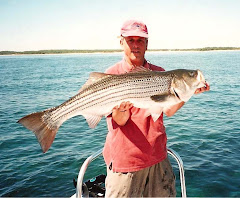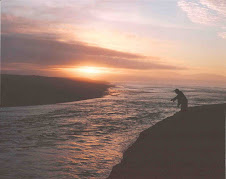
Casting crab flies to striped bass might be as close to technical fly-fishing as we have on the local saltwater scene. Bass love to eat live crabs of all varieties, but getting them to eat a crustacean imitation is not an easy task, especially if you’re sight casting to them in thin water or on the flats. That takes patience, stealth, accurate casting, an enticing retrieve and a modicum of good luck. It is one of those techniques where the fly angler has to actually “feed” the fly to the fish. The two most common methods for fishing crab flies are drifting them while blind casting to probable feeding stations, or visually sighting and casting to bass feeding in shallow water. The latter is unquestionably the more demanding and challenging approach. One thing is for certain when fishing in this manner – each bass caught is well deserved and gratifying.
Alan Caolo is one of the very best crab fly anglers in the Northeast. His book,
Sight-Fishing for Striped Bass (Amato Publications, 2001) focuses on various fly fishing strategies and is filled with helpful hints and tips on skinny water fly fishing for striped bass, including those involving crab flies. I touched base with Alan recently and he graciously provided some words of wisdom regarding his experiences fly-fishing crabs. His insights are sure to enhance any fly angler’s understanding of crab fly techniques.
“Fishing crab patterns here in the Northeast for striped bass and tautog is a relatively new approach that’s quite a bit different from the usual tactics employed by fly-rodders. There are certainly times when dead-drifting unweighted crab flies in currents, or casting-and-retrieving weighted patterns (as one would a Clouser Minnow) while “blind-fishing” will take fish, but, for the most part, crab flies are “sight-fishing” patterns. To fish them effectively, anglers must “feed” the fly to a game fish that was first spotted, and then presented the fly. The fish’s response to the fly must be visually interpreted during the retrieve as you “convince” the fish to take it. It is the need to read the fish’s behavior as you cajole it to eat that makes fishing these patterns (for the most part) a sight-fishing game – much like when bonefishing.
There are a number of very good crab patterns specifically developed for Northeast sight-fishing today; Dave Skok’s Blind Crab and Calico Merkin, and my own Green Diablo and Pink Lady are four of my favorites. A key to fishing these flies is getting them in front of the target fish with a presentation that lands the fly far enough ahead of the fish to avoid spooking it, and so as to allow it to settle to the bottom before the fish spots it and the retrieve is started. Once the fish sees it and is interested, try not to impart too much movement to the fly; a tempered retrieve that is punctuated with twitches, nudges, and is frequently paused is best for closing the sale . . . much as with bonefish and permit in the tropics.”
I’ll second the choice of Caolo’s Green Diablo and Pink Lady and add a few more patterns that are personal favorites: BMAR Crab, Samson’s Stone Crab, Mikkleson’s Crab-A-Dab-A-Goo, Courchaine’s Monomoy Crab and Murphy’s Live Body Defense Crab. Within our fishing range the most predominant species of crabs are: fiddlers, green, calico, mud, blue and Asian, all dietary preferences of local stripers. Many of the more effective permit and large bonefish flies also work well for striped bass. Keep some light tan, dark brown and mottled-back crabs in your fly arsenal. That combination of colors can handle most any conditions you will encounter on the Island.
I was honored recently by a stocky 33-inch bass that chose to eat one of my small crab fly concoctions. This occurred in an area with a large number of Asian crabs that wash into a small backwater eddy. Needless to say, that fish made my day! While the fly is more of a hybrid crab/crustacean pattern, it is fished like a drifted crab and the bass seem to like it.
Alan Caolo is one of the very best crab fly anglers in the Northeast. His book,
Sight-Fishing for Striped Bass (Amato Publications, 2001) focuses on various fly fishing strategies and is filled with helpful hints and tips on skinny water fly fishing for striped bass, including those involving crab flies. I touched base with Alan recently and he graciously provided some words of wisdom regarding his experiences fly-fishing crabs. His insights are sure to enhance any fly angler’s understanding of crab fly techniques.
“Fishing crab patterns here in the Northeast for striped bass and tautog is a relatively new approach that’s quite a bit different from the usual tactics employed by fly-rodders. There are certainly times when dead-drifting unweighted crab flies in currents, or casting-and-retrieving weighted patterns (as one would a Clouser Minnow) while “blind-fishing” will take fish, but, for the most part, crab flies are “sight-fishing” patterns. To fish them effectively, anglers must “feed” the fly to a game fish that was first spotted, and then presented the fly. The fish’s response to the fly must be visually interpreted during the retrieve as you “convince” the fish to take it. It is the need to read the fish’s behavior as you cajole it to eat that makes fishing these patterns (for the most part) a sight-fishing game – much like when bonefishing.
There are a number of very good crab patterns specifically developed for Northeast sight-fishing today; Dave Skok’s Blind Crab and Calico Merkin, and my own Green Diablo and Pink Lady are four of my favorites. A key to fishing these flies is getting them in front of the target fish with a presentation that lands the fly far enough ahead of the fish to avoid spooking it, and so as to allow it to settle to the bottom before the fish spots it and the retrieve is started. Once the fish sees it and is interested, try not to impart too much movement to the fly; a tempered retrieve that is punctuated with twitches, nudges, and is frequently paused is best for closing the sale . . . much as with bonefish and permit in the tropics.”
I’ll second the choice of Caolo’s Green Diablo and Pink Lady and add a few more patterns that are personal favorites: BMAR Crab, Samson’s Stone Crab, Mikkleson’s Crab-A-Dab-A-Goo, Courchaine’s Monomoy Crab and Murphy’s Live Body Defense Crab. Within our fishing range the most predominant species of crabs are: fiddlers, green, calico, mud, blue and Asian, all dietary preferences of local stripers. Many of the more effective permit and large bonefish flies also work well for striped bass. Keep some light tan, dark brown and mottled-back crabs in your fly arsenal. That combination of colors can handle most any conditions you will encounter on the Island.
I was honored recently by a stocky 33-inch bass that chose to eat one of my small crab fly concoctions. This occurred in an area with a large number of Asian crabs that wash into a small backwater eddy. Needless to say, that fish made my day! While the fly is more of a hybrid crab/crustacean pattern, it is fished like a drifted crab and the bass seem to like it.










